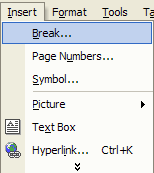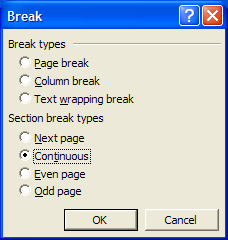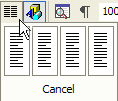Lesson 18: Working with Columns
/en/wordxp/text-boxes/content/
Introduction
By the end of this lesson, you should be able to:
Working with columns
Displaying information in columns gives you more options for displaying different types of information on a page while remaining easy for viewers to read. Certain types of information are best displayed using columns. Newspapers, newsletters, flyers, reports, announcements, and school projects often are created using Word's column feature.
Below is an example of a newsletter using columns and a graphic:
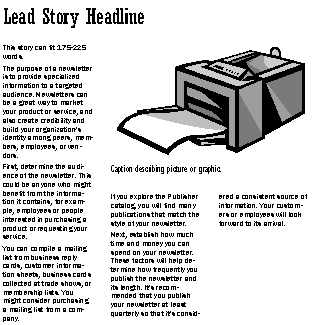
Working with columns can be challenging, but with practice you'll have columns mastered in no time. An approach we'll first try will be to enter text into a single column and then convert it into multiple columns.
Creating columns using the Columns dialog box
Using the Column dialog box rather than the Columns button will give you more control and precision over your column structure. The Columns dialog box will also give you a few more column options, including left and right columns as well as the ability to create up to eight columns per page.
To use the Column dialog box:
- Switch to Print Layout view.
- To make equal columns, move the insertion point to the end of the text and insert a continuous section break by choosing Insert Break Continuous.
- Select the text you want to change to columns.
- Click Format on the menu bar.
- Select Columns from the menu list. The Columns dialog box appears.
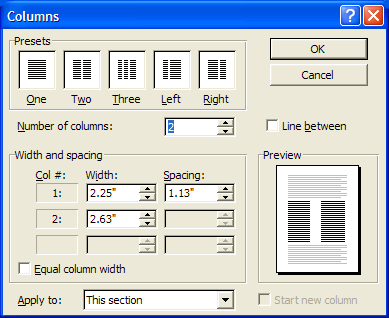
The Columns dialog box gives you the following options:
- Presets: Click a box to choose a preset number of columns.
- Number of Columns: Use the up and down arrow keys to select between one and eight columns.
- Line Between: Place lines between your columns.
- Width and Spacing: This offers features that allow you to specify an exact number for the height and width of your columns, as well as the spacing between your columns.
- Equal Column Width: Check this check box if you want columns to be the same width.
- Apply to: This allows you to create columns out of the selected text, the selected section, this point forward, or the entire document.
- Select your options, then Click OK.
To move text into the next column:
- Move the insertion point in front of the text you want to move.
- Choose Format
 Columns. The Columns dialog box opens.
Columns. The Columns dialog box opens. - Choose From this point forward in the Apply to: control.
- Click the Start New Column check box to move the text to the next column.
Challenge!
- Open an existing document that contains several paragraphs.
- Select the text, and convert it to two columns.
- Balance the column length by inserting a continuous section break.
- Add a title that spans both columns.
- Change your text back into a single-column document. Delete any additional section breaks if needed.
/en/wordxp/working-with-tables/content/




